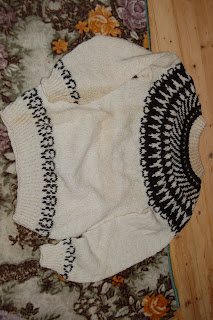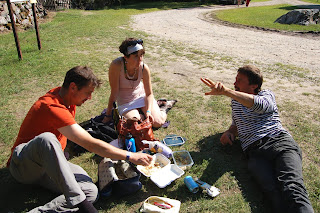"Turn the steel, spin the wheel, spin, spin!"
"...wind it fullSee naiivne väike luuletusekesekene oli kaasas ühe kampsuniga, mis ma praegu just Paavli kaltsukast ostsin.
with finest wool
that every lad
may wear his plaid
turn the steel
spin the wheel,
spin-spin!"
This innocent little poem came along with a sweater I just bought from a second hand shop.
Luuletus oli tavalise pastakaga kirjutatud kokkumurtud sildi sisse, mis teatas veel, et kampsunilõng on kodus kedratud 107-aastase vokiga M. MacDonald Ard[?]ay (üks täht on nii imelikult kirjutatud, ei loe välja) poolt kohalike Cheviot´-ja mustpealammaste villast.
The poem was handwritten on a sign that also informed me, that the yarn had been handmade at home by M. MacDonald Ard[?]ay (I cannot make out what this one letter is) with a 107-year-old spinning wheel from local Cheviot´- and Black Face sheep fleece.
Kare ja karm, nagu see Šoti vill ikka, aga see on midagi erilisemat, kui need kampsunid mida saad viskitehastest või kohalikest suveniiripoodidest osta. Kodutoode ikkagi. Nagu šotlased ise :-))
Tough and solid, as you can expect from Scottish wool, but this is a lot more special than the sweaters you can buy from any random whiskey breweries or local souvenir shops. Home product. Just like the scottish themselves.



Aga miks on sildi peal lehmad? Või ongi šoti lambad maskeeritud lehmadeks?
But why are there cows on the sign? Or are scottish sheep disguised as cows in general?
Valige turvalisim.Siis läksin veel turult läbi ja nägin, et seal müüdi Jahimehe Rasva. Noo jah....
Valige soe.
Valige parim.
Valige vill!
then I went through the market and saw them selling Hunters Fat. O...key....


Kommentaarid